
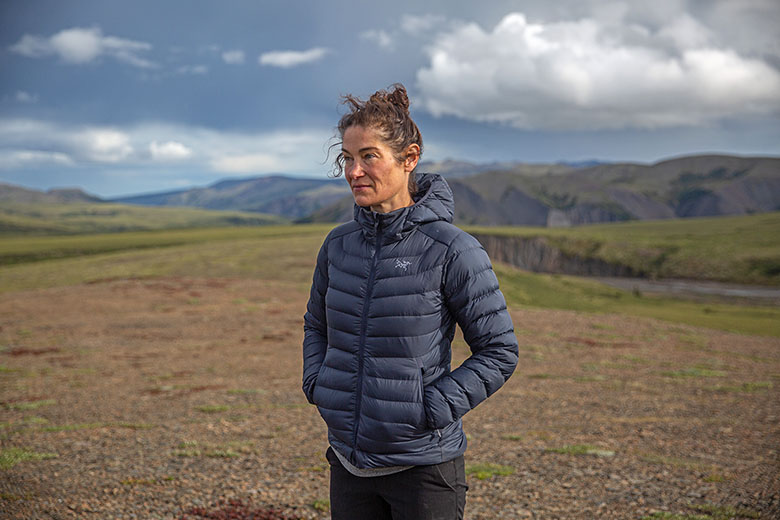
Price: $400
Weight: 10.3 oz. (women’s small)
Fill: 3.3 oz. of 850-fill down & 80/100g Coreloft
What we like: Impressive warmth and protection in a light and compressible package.
What we don’t: Expensive; thin shell fabric requires added care to avoid snags and tears.
See the Women's Cerium Hoody See the Men's Cerium Hoody
Arc’teryx’s Cerium is legendary in the performance down jacket market, and for good reason. With a mix of premium down and synthetic fill in moisture-prone areas, the jacket is both impressively warm for the weight and more protective than most competitors, which is an enticing combination for demanding backcountry use. I put the latest women’s Cerium Hoody through its paces this past summer—on bikepacking adventures, overnight canoe trips, and while camping and backpacking—and found little to fault. It’s decidedly pricey and relatively fragile but leaves little to be desired from a performance perspective. Below I outline my experiences with the women’s Cerium Hoody (we’ve also tested and reviewed the men’s Cerium). To see how it stacks up to the competition, see our articles on the best women’s down jackets and best midlayers.
Arc’teryx’s Cerium Hoody uses a practical mix of premium, 850-fill goose down (3.3 oz. in a women's small) and synthetic insulation in moisture-prone areas. The former is focused around the core and hood to maximize warmth, while 80- and 100-gram Coreloft is found at the cuffs, underarms, and collar for added assurance in wet weather (more on this in “Weather Resistance” below). In practice, the combination kept me cozy during our late-summer trip to Canada’s Yukon and Northwest territories. Snow was starting to fall in the mountains, but the Cerium did a great job fending off the chill. Wind can also have an impact on warmth, but the jacket makes it easy to batten down the hatches with hood and hem drawcords, a tall collar, and snug-fitting elastic cuffs. Even in strong gusts, the Cerium never felt drafty. Taken together, it’s a great shoulder-season piece and can easily be taken into lower temperatures with proper layering underneath.

At 10.3 ounces on my scale for a women’s size small—just 0.1 ounce higher than its listed weight—the Cerium Hoody is impressively light for its level of warmth. For comparison, Feathered Friends’ similarly intentioned Eos weighs around the same at 10 ounces, Himali’s performance-ready Accelerator is 11 ounces, and Patagonia’s more everyday-friendly Down Sweater Hoody checks in at 12.1 ounces. You can go lighter with a more specialized performance piece like Rab’s Mythic G (8.9 oz.) or Mountain Hardwear’s Ghost Whisperer Hoody (8.5 oz.), but both of those jackets make notable compromises in durability and features. And it’s important to note that none of those alternatives use synthetic fill, which is heavier and less compressible than down, which makes the Cerium’s low weight all the more impressive.
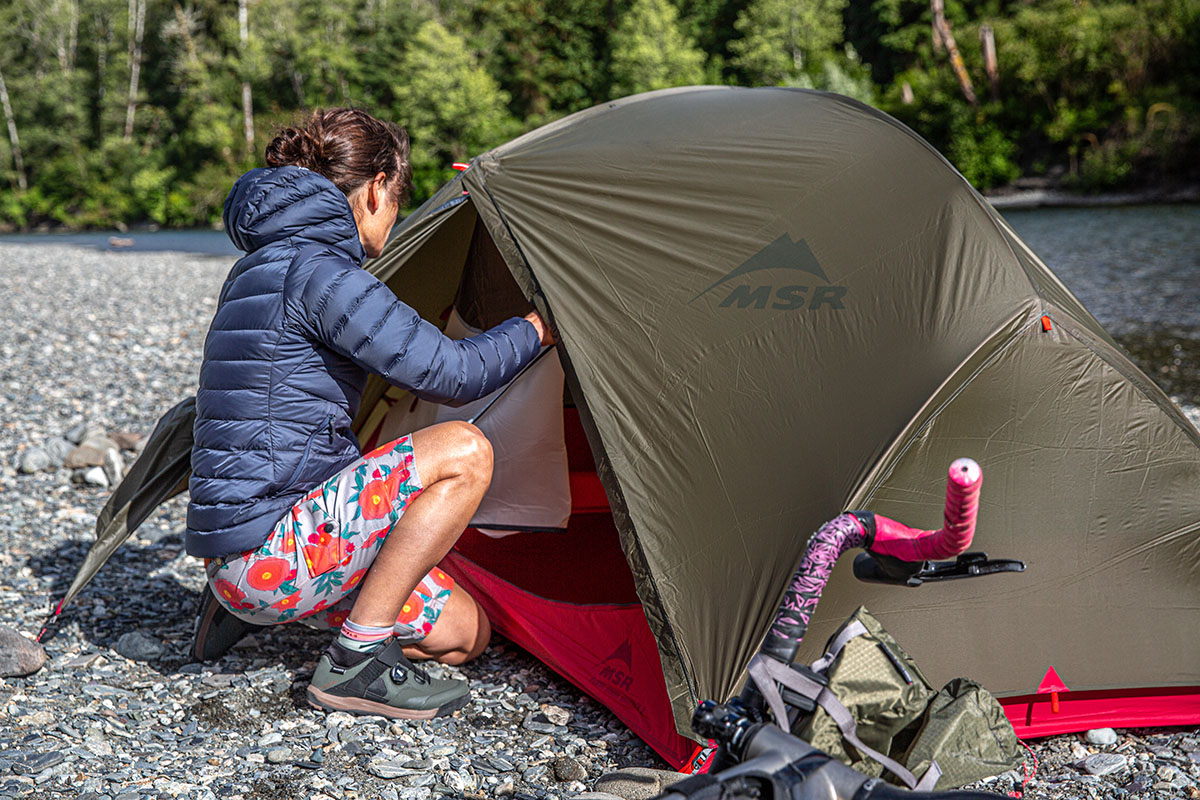
Weight and packability almost always line up, and the Cerium packs down to the size of a small cantaloupe in its stuff sack, which is located inside the interior pocket. Arc’teryx included a fabric loop for hanging the jacket from a climbing harness, and you can remove the stuff sack from the pocket if you prefer. Without the bag, the Cerium can be rolled into its hood and cinched tight via the single drawcord. If you opt to go this route, be aware that the jacket will be more susceptible to snags and tears (personally, I would much rather damage the stuff sack than the jacket itself).
Down jackets are typically poor performers in the wet, but the Cerium Hoody has a couple tricks up its sleeve to help. The first line of defense is the durable water-repellent (DWR) coating, which causes light moisture to bead up and roll off the exterior rather than soaking through. As I touched on above, Arc’teryx also included synthetic insulation in moisture-prone areas like the cuffs, underarms, and collar, which retains its loft and insulating abilities when wet—unlike down, which clumps up (for a deeper dive, check out our article on Down vs. Synthetic Insulation) In testing, this combination resulted in adequate protection during brief downpours. Though the exterior appeared to wet out with moisture relatively quickly, I remained perfectly dry and warm, and the outer shell did a good job fending off strong winds. That said, I wouldn’t recommend pushing the Cerium’s limits in heavy or sustained precipitation—in these cases, there’s no substitute for a waterproof shell.

Arc’teryx products don’t come cheap, but the flip side is that they’re generally very well built. The Cerium Hoody is no exception: Despite boasting a thin, 15-denier (D) nylon shell, the jacket feels fairly robust and hasn’t shown any real signs of weakness thus far. There are no down feathers poking through the shell, the stitching remains neat and snag-free, and the zippers and drawcords all continue to operate smoothly. Additionally, despite frequently wearing a heavy backpacking pack, the insulation around the shoulders has retained its loft with no evidence of packing out. To be sure, I wouldn’t recommend bushwhacking in the Cerium, but it should hold up just fine if you take reasonable care to avoid snags and tears.

The Cerium boasts Arc’teryx’s well-executed StormHood, which has been my favorite hood design for quite some time. In terms of adjustability, the single toggle at the back is easy to tighten, even with gloves on, and keeps the hood securely in place. In fact, I frequently donned the hood over a ball cap to prevent losing another hat to strong gusts. I also appreciate that the collar reaches just below my chin, with synthetic insulation at the top of the zipper that does a great job resisting moisture buildup from warm breath. It’s worth noting that Arc’teryx lists the hood as being helmet-compatible, and while I haven’t had a chance to test this claim, my husband found the hood on the men’s version to be too small for a ski helmet and a bit restrictive over a lower-profile climbing helmet. In other words, the hood is best on its own or with a beanie or ball cap.
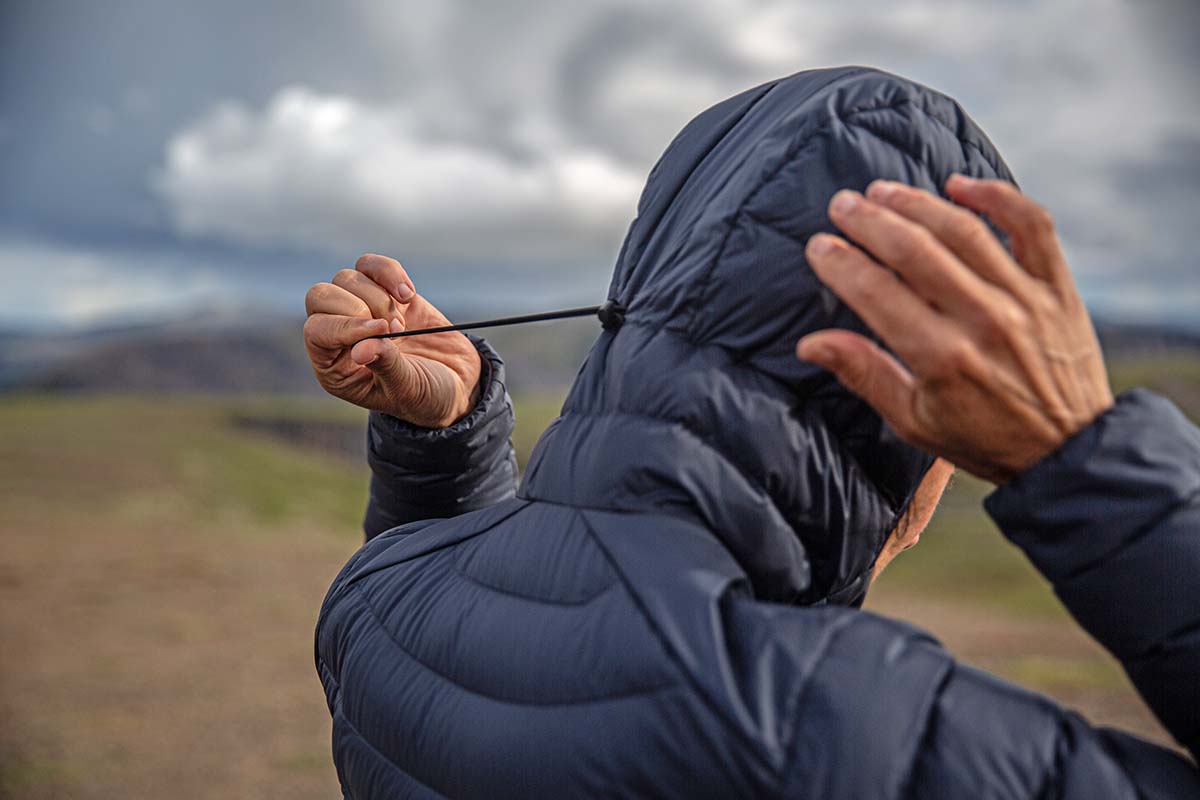
The Arc’teryx Cerium Hoody has a fairly standard pocket layout that includes two zippered hand pockets and a single zippered pocket inside that contains the stuff sack. The hand pockets are very cozy and large enough to fit gloved hands, while the interior pocket easily swallows an iPhone and other small valuables like a wallet or keys. It’s worth noting that the hand pockets aren’t positioned high enough to clear a climbing harness or backpack hipbelt, but they’re a natural height for everyday use, which is the more important consideration for most.

In my usual women’s small, the Cerium Hoody offered a just-right cut that wasn’t too roomy nor too restrictive. Despite its “fitted” designation, I had zero issues layering underneath—in fact, on a particularly cold evening setting up camp in Tombstone Territorial Park, I somehow managed to fit two baselayers plus my Arc’teryx Cerium Vest and Beta hardshell under the Cerium Hoody. Impressively, I was still able to move around comfortably with no impact on mobility. On the flip side, the Cerium is still trim enough to easily slide under the same Beta shell. All in all, it’s a highly versatile fit that should work for a range of activities and uses.

Arc’teryx has been making strides on the sustainability front of late, and the latest Cerium Hoody is a case in point. Highlights include the use of recycled nylon, dope-dyed fabrics that require less water and energy consumption during production, and down insulation that’s certified to the Responsible Down Standard (RDS). The jacket also contains raw and bluesign-approved materials, the latter of which indicates that the chemicals used have been deemed safe for consumers, workers, and the environment. Finally, the Cerium uses a PFAS-free DWR coating that forgoes the use of per- and polyfluoroalkyl substances, which are known as “forever chemicals” and have been linked to several health and environmental issues. Taken together, it’s a very competitive effort from Arc’teryx and only adds to the Ceirum’s all-around appeal.
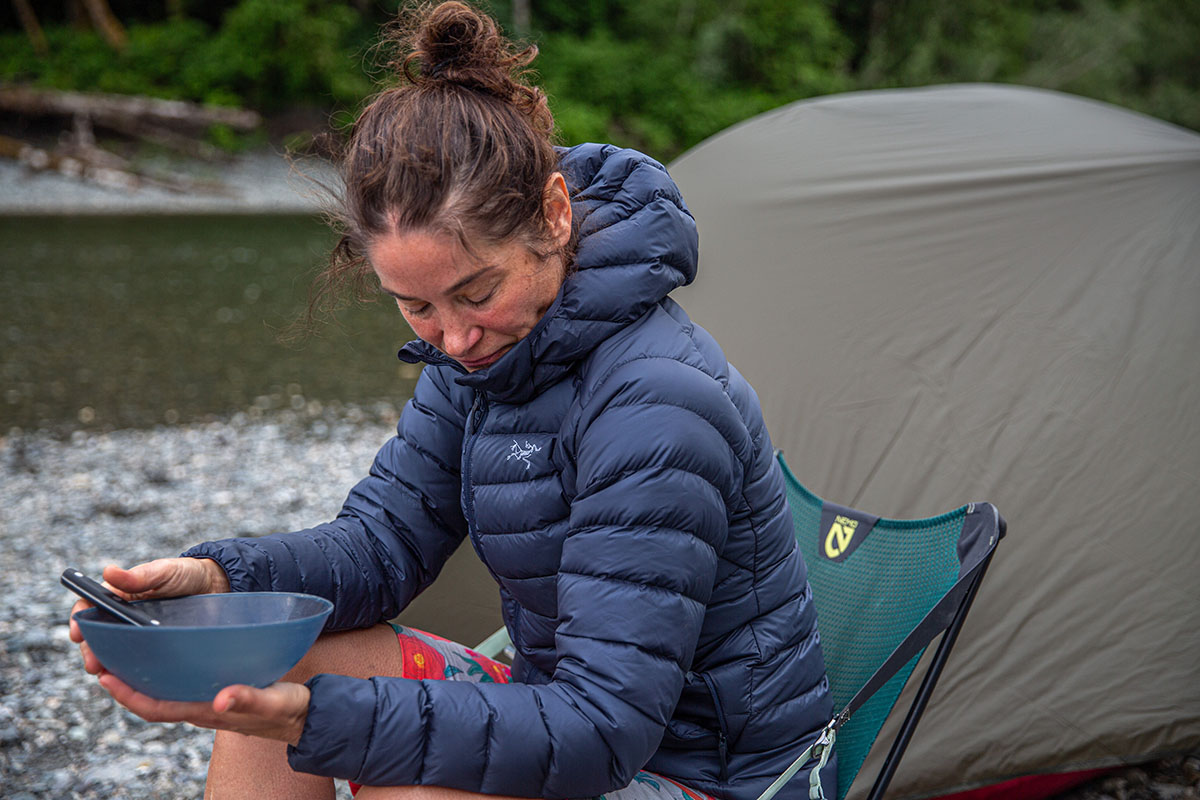
I put the women’s Cerium Hoody through its paces for this review, and it’s also sold in a men’s version for the same price. For comparison, the men’s Cerium Hoody clocks in at 11.9 ounces, contains 4 ounces of 850-fill down, and is sold in different colorways but shares an otherwise identical build and feature set. Arc’teryx also makes the non-hooded Cerium Jacket ($380), which weighs 9 ounces for the women’s version. Rounding out the collection, the Cerium is offered in a vest style for women, a men’s Cerium Pant, a women’s-specific Cerium Mid Coat that provides coverage down to the mid-thigh, and a Hybrid Hoody variation that uses an air-permeable softshell fabric in key areas for better breathability. The Cerium Hybrid Hoody is sold in both men’s and women’s versions, and you can check out our review of the former here.
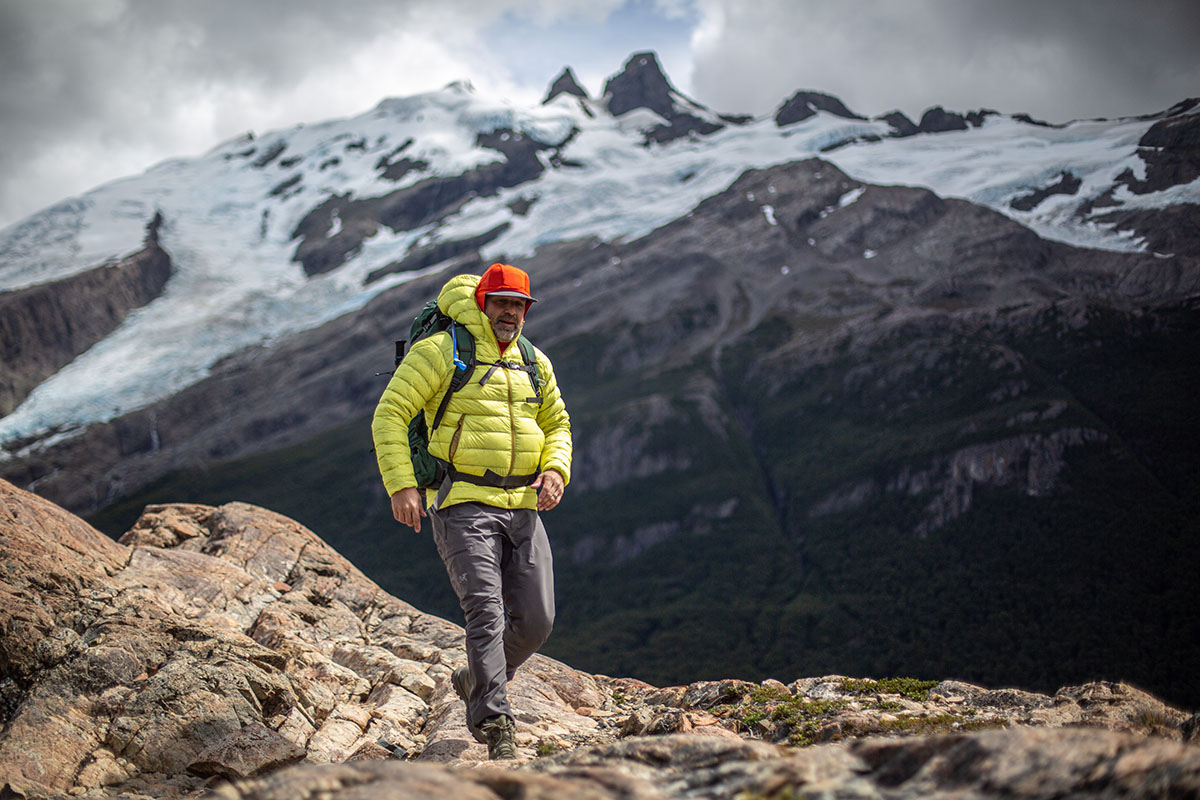
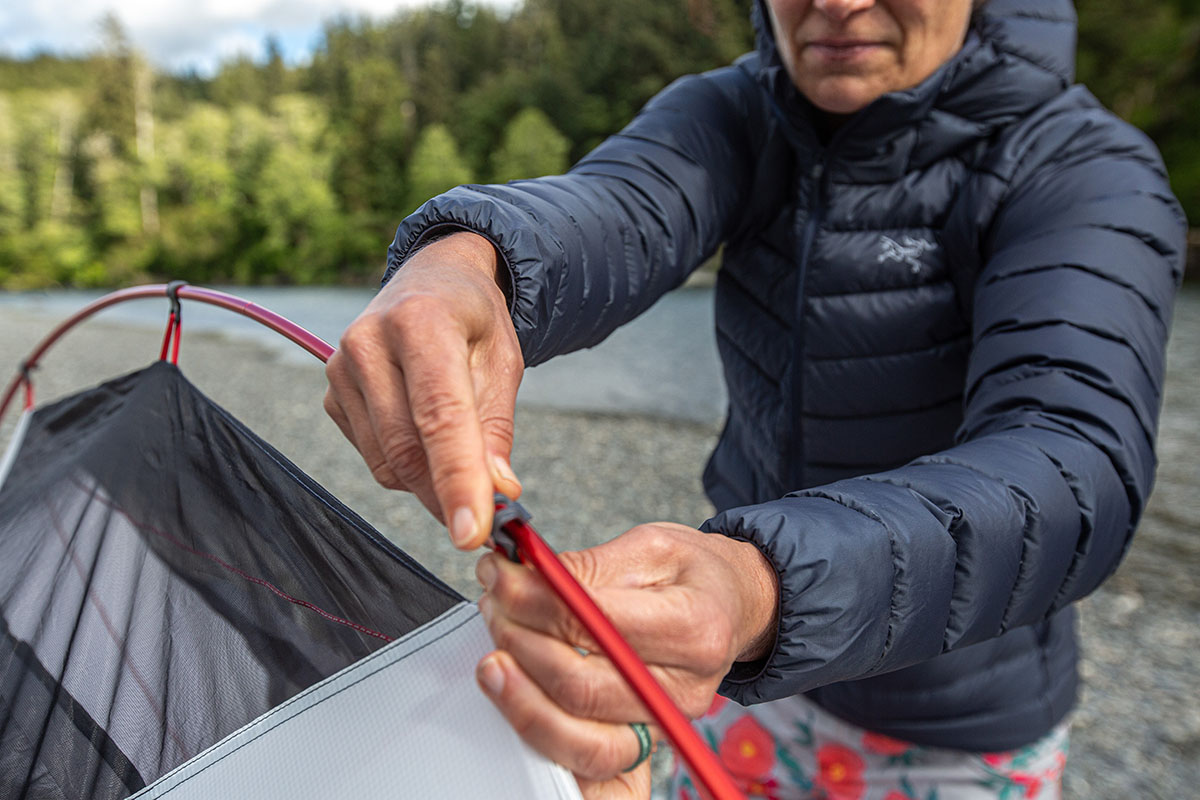
| Jacket | Price | Weight | Fill | Fill Weight | Denier |
|---|---|---|---|---|---|
| Arc’teryx Cerium Hoody | $400 | 10.2 oz. | 850-fill down & Coreloft | 3.3 oz. & 80/100g | 15D |
| Patagonia Down Sweater Hoody | $329 | 12.1 oz. | 800-fill-power down | 4.0 oz. | 20D |
| Arc'teryx Thorium Hoody | $500 | 1 lb. 0 oz. | 750-fill down & Coreloft | 5.0 oz. & 80/140g | 30D |
| Feathered Friends Eos | $409 | 10.0 oz. | 900-fill down | 3.7 oz. | 12D x 20D |
| Himali Accelerator Down Jacket | $330 | 11.0 oz. | 850-fill down & synthetic | 4.0 oz. | Unavail. |
| Rab Mythic G Down Jacket | $525 | 8.9 oz. | 1,000-fill down | 4.0 oz. | 7D |
The Cerium Hoody is the definition of a performance down jacket and great for weight-conscious pursuits like backcountry skiing, backpacking, and climbing. That said, its thin shell and streamlined fit put it squarely in the technical category, and we prefer Patagonia’s Down Sweater Hoody for crossing over for everyday wear. In comparing the two, the Patagonia is around $70 cheaper, boasts a slightly thicker shell fabric, and offers comparable warmth with 4 ounces of 800-fill down. However, the Cerium’s 850-fill insulation is loftier and more compressible, allowing it to pack down a little smaller. It also results in a lower weight, with the Arc’teryx checking in around 2 ounces lighter than the Down Sweater. In the end, a final decision will come down to your priorities and objectives, but we consider the Patagonia to be the most well-rounded down jacket currently on the market.

For a step up in warmth from the Cerium and Down Sweater, we love Arc'teryx's own Thorium Hoody. For $100 more than the Cerium, the Thorium features a thicker and more durable 30D shell, a roomier “regular” fit for layering more heavily underneath, and a two-way front zipper that pairs well with a harness and makes it easier to sit down without the jacket bunching up. The Thorium also packs in more down (5 oz. of 750-fill in a women’s small) and thicker (140g and 80g) Coreloft insulation that add a noticeable boost in warmth, although weight goes up by around 6 ounces. As a result, the two jackets have different strong suits: The Cerium is the more capable backcountry piece, while the Thorium wins out in warmth and versatility for mixed outdoor and around-town use (for more, see our in-depth Thorium Hoody review).
A closer competitor to the Cerium Hoody comes from down specialist Feathered Friends: their Eos Down Jacket. For around the same price as the Cerium, the Eos is comparably light at 10 ounces, similarly warm with 3.7 ounces of 900-fill down, and more protective than most competitors with a highly water-resistant Pertex Quantum shell. The Eos’ feature set also lines up well with the Cerium’s, although we prefer Arc’teryx’s drawcord-equipped and helmet-compatible StormHood over the Eos’ basic, non-adjustable design. Finally, the Eos has a noticeably boxier fit than the streamlined Cerium, which isn’t ideal for layering under a shell. To be sure, both are highly capable and well-built performance pieces, but the Cerium strikes us as slightly more competitive overall.

While less of a household name than Arc’teryx, Colorado-based Himali specializes in premium performance pieces at hard-to-beat prices. Their Accelerator Down Jacket is a case in point, combining a healthy 4 ounces of 850-fill, hydrophobic down with all the technical features we look for in a backcountry-ready design. These include a water-resistant shell and zippers, synthetic fill in moisture-prone areas, hood and hem drawcords, and a trim but not restrictive fit. The biggest issue for most will be availability: Himali gear is only sold through a few retailers, and you likely won’t have the chance to try the jacket on before buying. But performance for the price is truly exceptional, and overall fit and feel line up very closely with the more expensive Cerium.
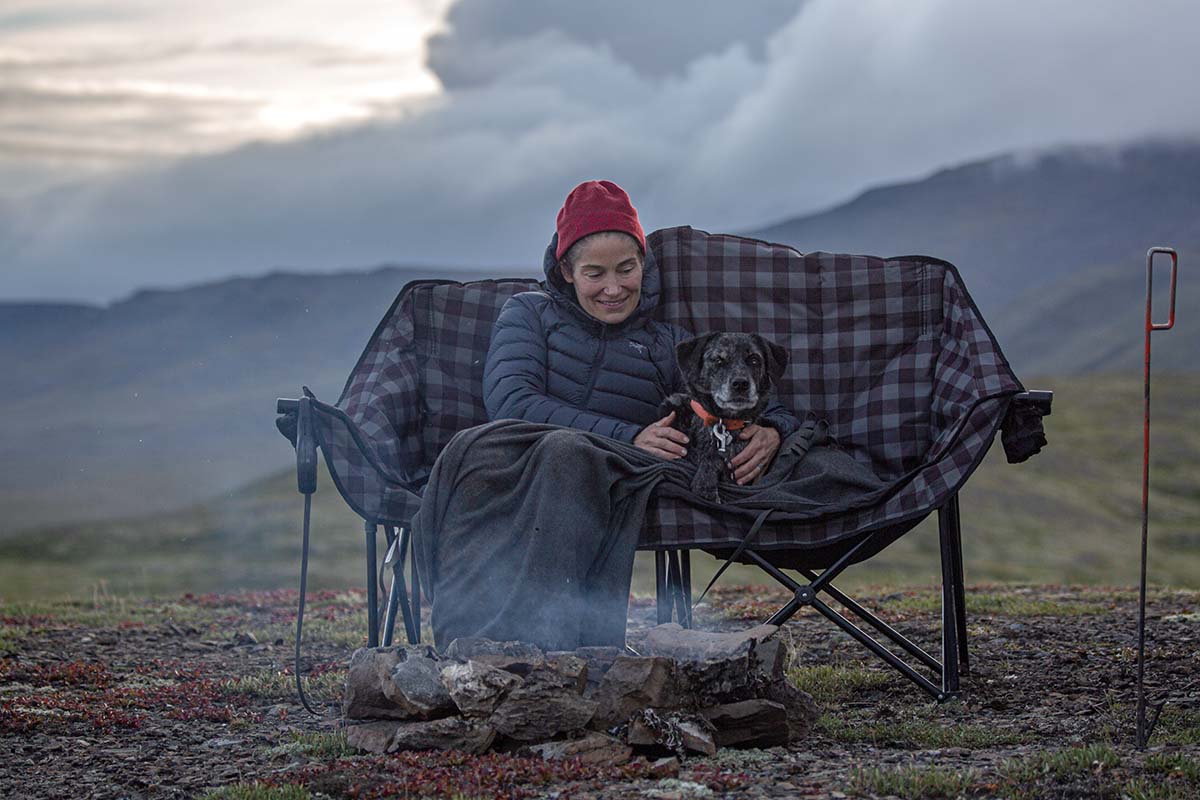
A final alternative to consider is Rab’s Mythic G, which turns up the performance dial even further. Stacked up against the Cerium, the Mythic G is both lighter at 8.9 ounces and warmer with 4 ounces of 1,000-fill down and a heat-reflective lining. However, Rab did have to make some sacrifices to achieve such impressive specs, with the two most notable compromises being durability and features. Specifically, the Rab uses an ultra-thin 7D shell that’s noticeably less robust than the Cerium’s 15D fabric, the hood is non-adjustable, and there are just two hand pockets for storage. The Mythic G also forgoes synthetic insulation for added assurance in wet weather. Added up, the Cerium is far and away the less compromised piece, but if your main goal is maximizing warmth while minimizing weight, the pricier and more specialized Mythic G is certainly worth considering